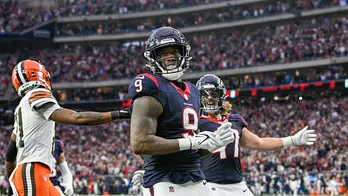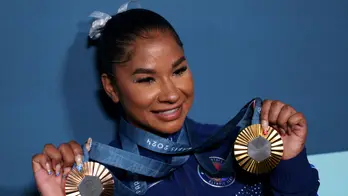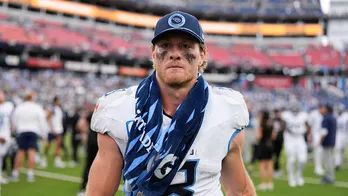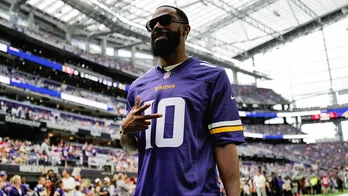‘Playing against Serena the most defining moment of my career’
The "us" is a young girl from Hyderabad, propelled by her parents, breaking away from the societal and cultural norms to chart a path untravelled in Indian tennis, nay, Indian sport. The “things” are a teenaged Indian girl sharing the Rod Laver Arena with Serena Williams for the Australian Open third round while breaking the glass ceiling back home, scaling a since unmatched top-30 of the world singles rankings, winning six Grand Slam doubles titles including three on the bounce with Swiss legend Martina Hingis in 2015-16, becoming the world No 1 in doubles and staying there for almost two years, returning to the tour as a mother to swell her WTA doubles title count to 43 and make the 2023 Australian Open mixed final with Rohan Bopanna in her final Slam show.
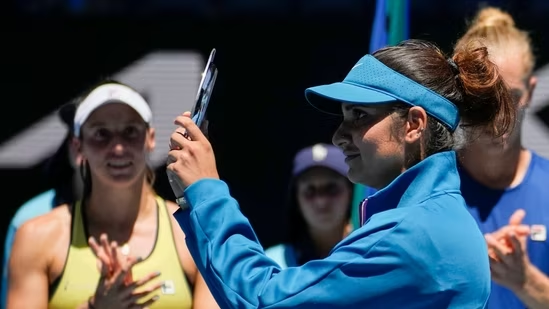
All of that, while banishing a constant barrage of questions on her career choice, personal life and, at times, even the clothes she wore.
The 36-year-old wrapped up her decades long, and history defining, career on Tuesday at the WTA 1000 Dubai in front of family and friends (she and Madison Keys lost the first round). Mirza, in this chat with HT, looks back at a journey she hopes other girls in India would dare to dream and follow. Excerpts:
Talk about your early days of picking up the sport in Hyderabad—the challenges you faced in terms of a lack of infrastructure, support and societal acceptance in what was a different time to now perhaps?
Yeah, it was a different time. We still have some way to go, but it was very different 30 years ago. Imagine a young girl from Hyderabad, playing on a cow dung court. My mom had to fight with the coach to get me enrolled because he said I was too small. We went from that to thinking of playing Wimbledon one day. People would think it’s a joke, laugh at us. And honestly, I don’t blame them. It was a crazy thought at that point of time. I was very fortunate to come from a family that believed in sport, believed that sport was for all gender and that it’s a great way of life. I also think I had parents who were way ahead of time in the way they used to think. To have a young girl from a Muslim family and take on an entire society and say, “I think she’s going to play Wimbledon one day” was unheard of back then. Because there was actually nobody to point at and be like, she’s done it so we could do it too. It was difficult to say the least and put it mildly. But it was a lot of fun.
You had early success on the juniors and ITF circuit. At what point did you believe you had something special in store?
When I was 12, I won the U-14 and U-16 Masters tournament the same day in Delhi. That was me six years into playing tennis. That was probably the defining moment for me, where I felt like, “Oh, I’m pretty good at what I do”. I know 12 is a really young age to realise that, but you are just so much more matured when you play sport from an age as young as six. You’re dealing with wins and losses on a daily basis from a very young age, and you grow up real fast! You know how to deal with those losses, and you don’t really cry—I mean I didn’t, at least—after them. So, at 12 I thought maybe I could give this a shot. Until then, I was like, “I’d rather study, why am I doing this, I have to travel so much”. And then when I made that mental switch at 12 as well is when I went leaps and bounds in terms of what I was doing on the court.
Leaps and bounds brings us to 2005, when you won the WTA title in Hyderabad, played Serena at the Australian Open and Maria Sharapova in the US Open Round of 16. You’ve also competed with the likes of Venus Williams and Ana Ivanonic. How much do you relish those singles encounters with legends of the sport?
Just the fact that they had respect for an Indian girl playing at that level was a lot. For me, playing against Serena was probably the most defining moment of my career, even till today. Simply because that’s the match that everybody remembers. It’s scary to think it was 18 years ago; it feels like it was yesterday for me. To be able to compete against the best of the best in the world where we, as Indians, I don’t think we ever imagined that there would be a young Indian girl playing on the centre courts of Grand Slams. To play (Svetlana) Kuznetsova at (2005) Wimbledon, even though I lost 6-4 in the third after beating her in a tournament before; to beat (Nadia) Petrova who was No 4 in the world. You know, those are the moments. Sure, the victories were great but to also be able to play against Venus in the third round of the (2008) Australian Open. To have those moments where I’m in it with a shot against some of the best players of all time, to know that I belonged there, was very special.
You peaked to world No. 27 in singles in 2007, around the time you had those knee and wrist issues that lasted a few years. You still had decent results in singles before switching fully to doubles in 2012. There was a school of thought that you perhaps had more singles in store...
I mean, the school of thought also is that I still have more tennis left in me right now. We can’t go by the school of thought of other people, no? It has to be what I feel. The thing is, it's not just about what you see on the outside of the tennis court, it’s also about what you feel from the inside. People don’t really understand that. You know what is best for you.
When I stopped playing singles and took that decision, I think I was 75-80 in the world (Sania's 2011 year-end singles ranking was 88). That number in singles is some of the best ranking people from our side of the world have had. Even that time people were like, “You’re 80 in the world, why are you switching?” But I was hurting. Everything hurt! For me, it was about should I remain 80 in the world for one year and probably get injured multiple times or get to where I believed I belonged, which is in the world's top bracket. The thought process was: Do I have a realistic shot at becoming No 1 in doubles? Yes. Do I have a realistic shot at winning Grand Slams? Yes. Or do I stay 75 in the world, maybe get to 60, get hurt in my knee and wrist again and be out for months. That was not something that I could accept, because I am too much of a perfectionist for that. I want to excel at things that I do. I wasn’t able to practice the way I wanted to, wasn’t able to put in the effort needed to be in the world's top 30 (in singles). In hindsight, it was the best decision, right? I became No 1 in the world, stayed there, won Grand Slams, did everything that I thought I was going to be able to do.
A shot that defined you and became a weapon was the forehand. Was it natural or did you have to develop it?
I do believe it came naturally to me. From a young age, I had a very western grip. And even when my dad and coaches tried, I did not want to change it. This was when I was 9, and I said, “No, this is how I’m going to play my forehand”. After that, it became one of the best forehands in the world. So, I want to say it was more natural than coached, because I refused to listen at 9! (laughs) I also feel there's a bit of genetics to it. I’m a very hypermobile person, so my wrist moves at a faster and a much bigger range than it does for other people. The timing of it is something that I believe generates the power. I can hold on till the last moment and change direction. Just last week, I was hitting with (India junior) Yuvan Nandal and he told me, ‘Didi, I just can’t tell where your forehand is going’. I think that’s also what makes it so dangerous.
You’ve had to face repeated questions on varied subjects throughout your career. Did it ever make you question your choices?
Never. It made me question other people, though. I’m not a person who regrets much, because of the fact that I do things on my own terms. If I’m told to do something, I know I won't be able to give my best at it, and I know if something goes wrong I will blame the other person for it. I’d rather make my own choices and take my own decisions. And I never question that. I actually—I won’t say thrived on it—but I was OK. I had moments which were difficult, when people would talk a lot about the stuff outside of the sport. But I was good at compartmentalizing myself in most situations. If I had a fight at home, no one would know in the locker room. If I had a bad day on court, no one would know at home.
Disclaimer: The copyright of this article belongs to the original author. Reposting this article is solely for the purpose of information dissemination and does not constitute any investment advice. If there is any infringement, please contact us immediately. We will make corrections or deletions as necessary. Thank you.
